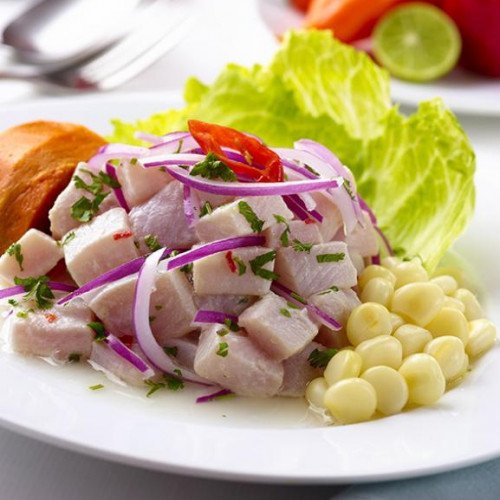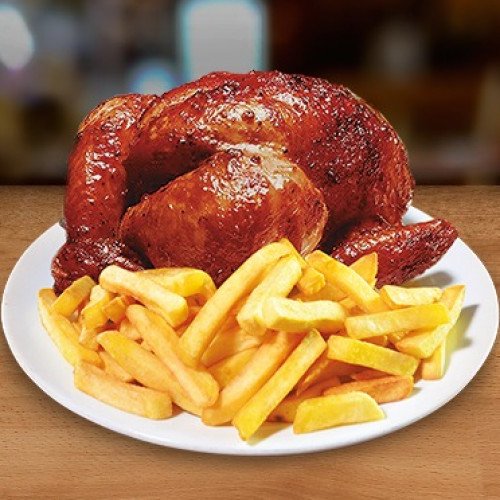Best peruvian dish

Cebiche
Ceviche, also cebiche, seviche, or sebiche[4][5] (Spanish pronunciation: [seˈβitʃe]) is a South American seafood dish that originated in Peru, typically made from fresh raw fish cured in fresh citrus juices, most commonly lemon or lime, and spiced with ají, chili peppers or other seasonings, including chopped onions, salt, and coriander. Because the dish is eaten raw, and not cooked with heat, it must be prepared fresh and consumed immediately to minimize the risk of food poisoning.[6] Ceviche is often eaten as an appetizer; if eaten as a main dish, it is usually accompanied by side dishes that complement its flavors, such as sweet potato, lettuce, maize, avocado, or cooking banana.[7][8][9] The dish is popular in the Pacific coastal regions of western Latin America.[3] The origin of ceviche is Peru, where it is considered a national dish.[7] The technique of macerating raw fish and meat in vinegar, citrus, and spices (escabeche) was brought to the Americas from Spain and is linked to the Muslim heritage in Spanish cuisine. However, archeological records suggest that something resembling ceviche may have been consumed in Peru nearly two thousand years ago.[7] The dominant position Lima held through four centuries as the capital of the Viceroyalty of Peru allowed for popular dishes such as ceviche to be brought to other Spanish colonies in the region, and in time they became a part of local cuisine by incorporating regional flavors and styles.
Statistics for this Xoptio

Pollo a la Brasa
Pollo a la brasa, pollo asado, blackened chicken or rotisserie chicken in the United States and charcoal chicken in Australia, is a common dish and one of the most consumed in Latin America. It is one of the most popular dishes in Peru, along with ceviche, papa a la huancaina, Salchipapa, and chifa; the Peruvian variant of the dish originated in the city of Lima in the 1950s. It is also popular in Colombian, Brazilian cuisine and Venezuela. It is a rotisserie chicken dish that is a Peruvian version of pollo al spiedo[1][2] It was developed in Peru in the 1950s by Roger Schuler and Franz Ulrich, who were Swiss residents in the country.[1] Schuler was in the hotel business in Peru. He devised the specific method of cooking the chicken, observing his cook's technique in preparation, and gradually, along with his business partners, perfected the recipe, creating the Granja Azul restaurant in Santa Clara, district of Ate, in Lima. Originally its consumption was specific to high-end restaurants (during the 1950s until the 1970s), but today it is a widely available. The original version consisted of a chicken (cooked in charcoal and marinated only with salt) served with large french fries and traditionally eaten with the fingers, without cutlery, although most modern Peruvians will eat it with a fork and knife. It is almost always served with creamy (mayonnaise-based) sauces, and most frequently with a salsa known as ají. In restaurants all over the United States like in Perú, pollo a la brasa is served with a portion of french fries, salad with a homemade ranch sauce, and a variety of sauces depending on the restaurants. In 2013, Peruvian cuisine was listed among the top three cuisines with potential for popular menu items in the United States.[3] Pollo a la brasa can now be found in eateries all throughout the U.S. and is considered to be a staple item on the menu of Peruvian/American fusion restaurants.